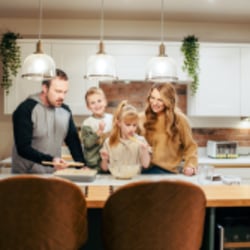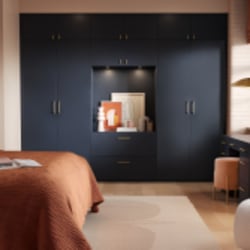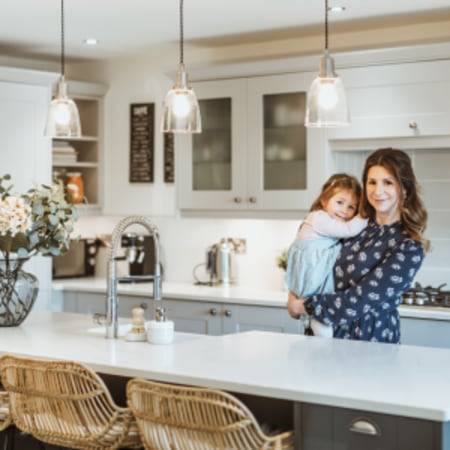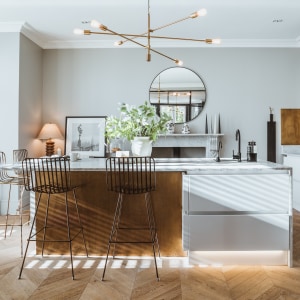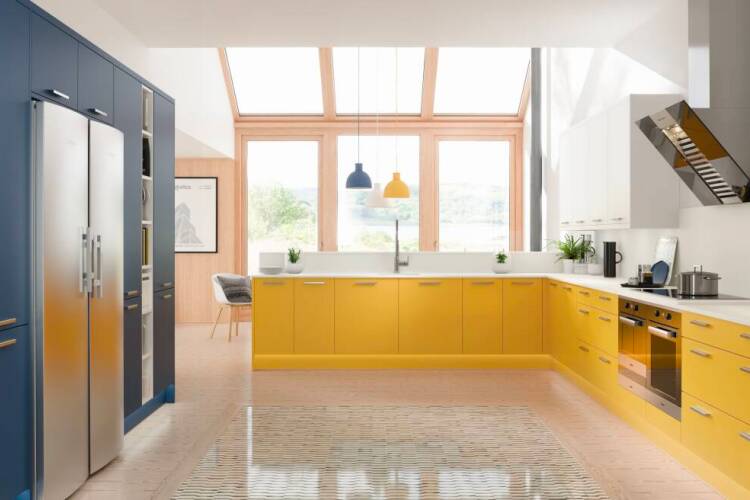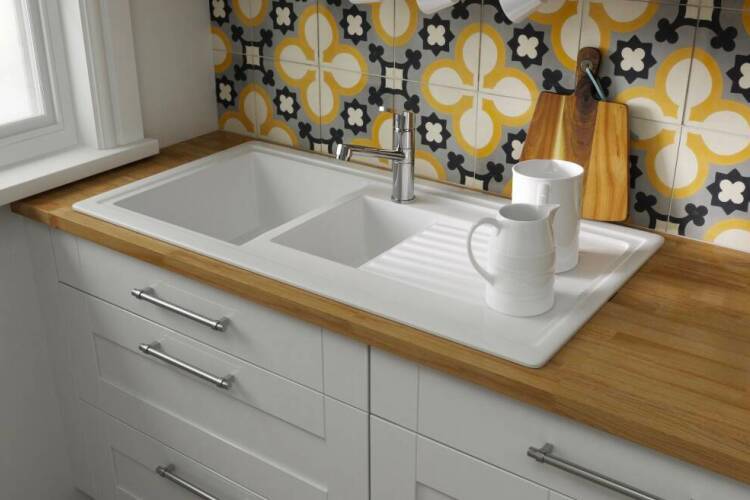How to choose a coloured worktop for your kitchen
Colour ideas
The material, colour and finish of your kitchen worktops will influence the entire kitchen aesthetic, so it's essential you choose a worktop that flatters and enhances your theme.
A wide spectrum of colours can be implemented on your kitchen worktops, but how do you know which one is right for your kitchen? Whether you’re having an entire kitchen refit, or just want to change your kitchen worktop colour, consider each of these factors to help you decide.
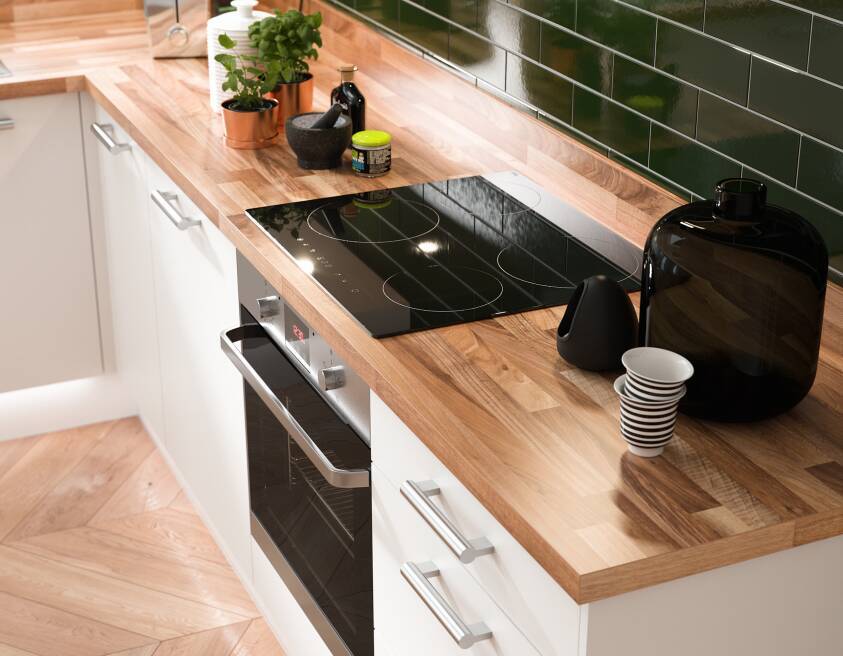
Light or dark surfaces?
Depending on the amount of natural light in your kitchen, as well as the colour and tone of your chosen units, you'll need to decide whether the colour of your worktops should be light or dark.
Light worktop colours will help to make the space feel brighter, as the white undertones of the worktops will naturally reflect any light. However, they can look easily cluttered, as not only the items but their shadows easily show on the light surface. So, they're perhaps better suited to those who keep things tidy.
Dark worktops can add a rich tone to the kitchen and can still be effective in reflecting light if you choose a glossy finish. If you have a small kitchen and are worried about the dark surfaces dominating the room, consider pairing dark kitchen worktop colours with lighter units in cream, white or green, to ensure that the space still has bright areas to lighten the space.
Larger kitchens with plenty of lighting will more comfortably support a fully dark colour scheme across the room.

Multi-tonal or monotone worktops?
Once you've decided between light or dark worktops, decide whether you want monotone (one colour) or multi-tonal (more than one colour) worktops.
Monotone worktops will have one consistent colour throughout, without any patterns or variations. These are typically manufactured rather than naturally occurring, made from materials such as acrylic or laminate.
Popular monotone worktop colours include bright white and jet black, though bolder variations in green, grey and brown are available.
Multi-tonal worktop colours are typically made from natural materials, such as wood or stone. However, they can be replicated throughout artificial worktops using high-resolution imagery.
Granite is a popular choice for those looking for a modern, glossy finish using shades of white, black, and brown. Timber worktops will typically feature various shades of brown and cream with a matte finish, and is a great choice for a rustic or traditional kitchen design.
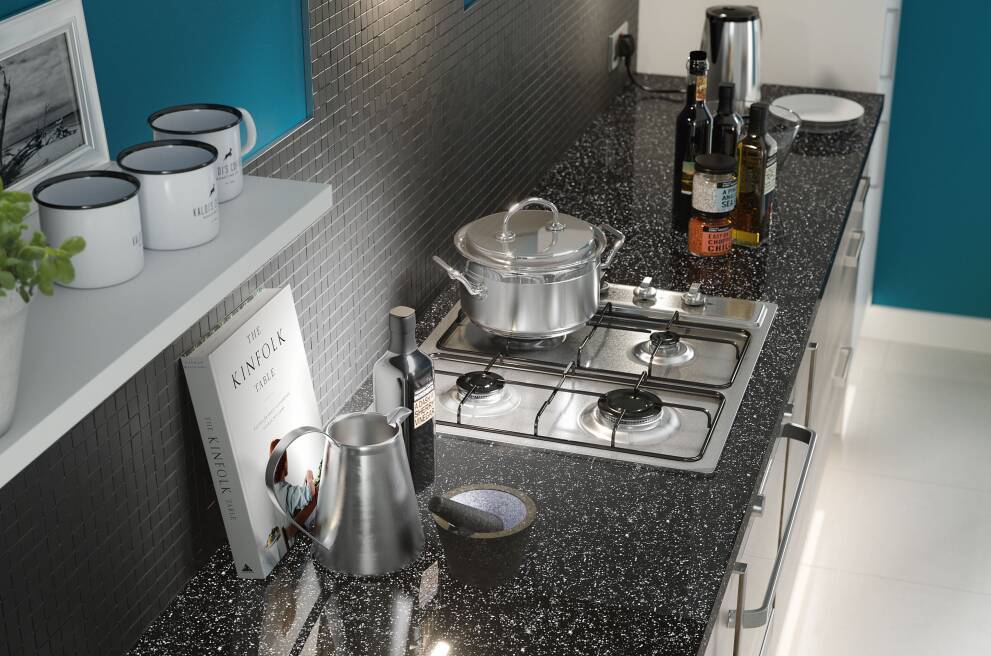
Will they flatter your flooring?
Your worktops and kitchen flooring need to flatter one another, or you could risk accidentally creating a kitchen design that clashes. The finish of the flooring and the worktops – glossy or matte – ideally need to match, but the colours simply need to complement each other.
There are so many worktop colour variations, especially in naturally occurring materials such as quartz, granite and wood, and potential combinations between the floor and the tops. For an idea of what to look at, read our guide to kitchen colour schemes to learn more about how colours work together. However, the best way to ensure that your flooring and worktops will go together, is simply to put several samples of each beside one another.
The safest way to ensure your scheme is coherent is to simply choose similar colours for the floors and worktops. If you've chosen deep brown floors, consider a similarly toned worktop; if you prefer a glossy black granite-style floor, choose a dark glossy worktop, too. You can be more daring than this, and choose contrasting – yet flattering – colours, but it's a good rule of thumb.
Choosing the colour of your worktops is an essential part of kitchen design, and one that warrants time and careful consideration. For professional, personalised advice on changing your kitchen worktop colour, book your free design appointment with one of our experts.

